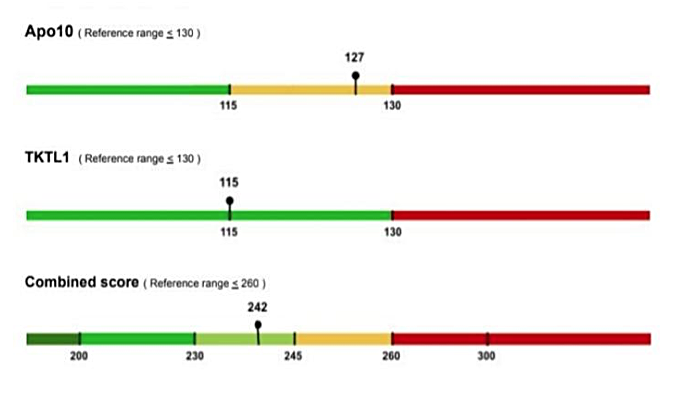EDIM test

EDIM technology is a biological biopsy that examines macrophages to detect antigens that have previously been phagocytosed by these immune cells. CD14 and CD16 surface antibodies, which bind specifically to the cell surface, are used for this purpose. The cells are then briefly permeabilized to allow additional antibodies to enter the cells. These antibodies are directed against the antigens used as a form of detection. Everyone has abnormal cells in the body. If the body’s immune defenses against these abnormal cells are weak, the abnormal cells may eventually become tumors or cancerous.
In the early stages, abnormal cells can develop gradually. Cancer cells can take up to ten years to be detected. The transition from abnormal cells to detectable cancer can be subtle, but it is critical. If an EDM test is performed on a regular basis, the risk of cancer can be detected at an early stage, which may affect the chances of preventing and curing cancer.

Apo10 is the value of the abnormal cell. It’s a cell that doesn’t die which grows gradually in the body. The risk factor can be benchmark against the TKTL1 value:
- Green = Low risk
- Yellow = There is a risk of abnormal cells
- Red = High risk of abnormal cells or may have cancerous tumor in body
TKTL1 value is the value of fermentation of sugar in cells. Normal cells do not have this fermentation, indicating abnormality in the cells. Effective detection of cancer cells is done by evaluating the parallel results of the Apo10 value:
- Green = Low risk
- Yellow = There is a risk of abnormal cells
- Red = High risk of abnormal cells or may have cancerous tumor in the body
Both values, when summed up, should not exceed 245, which indicates low risk.

